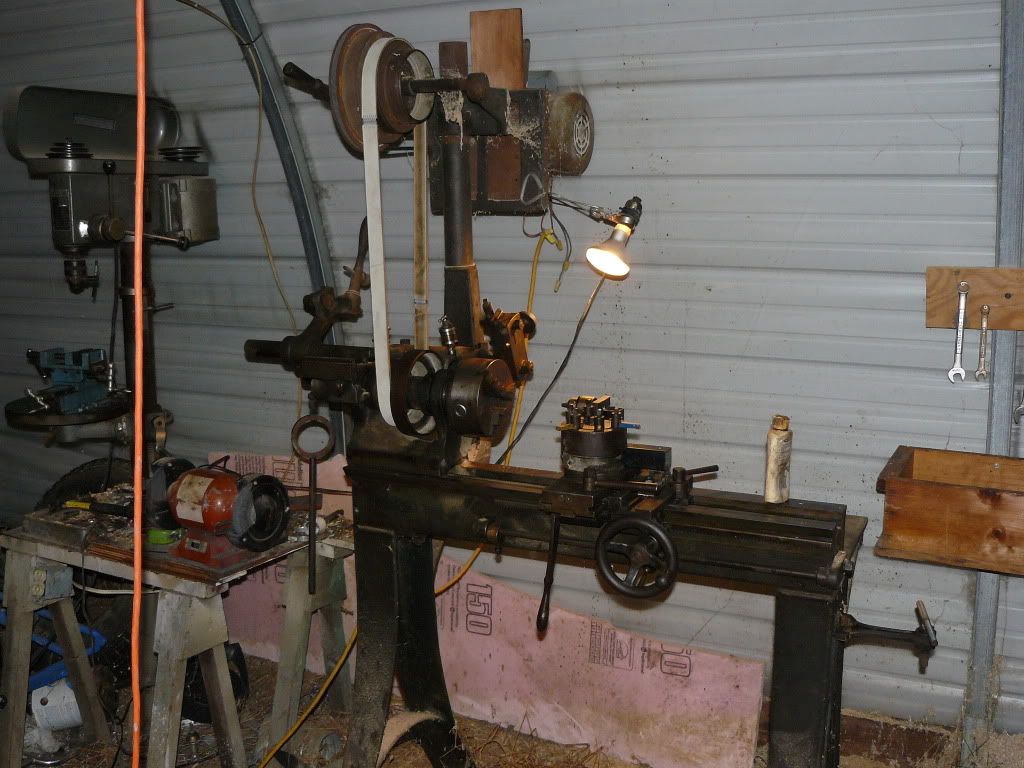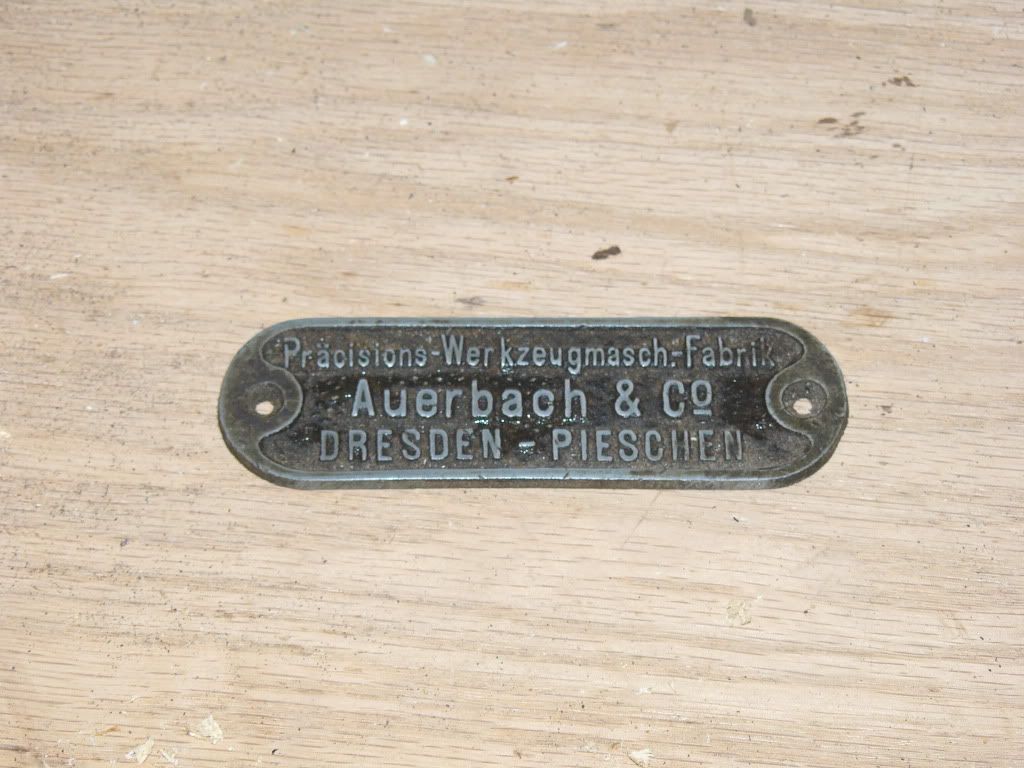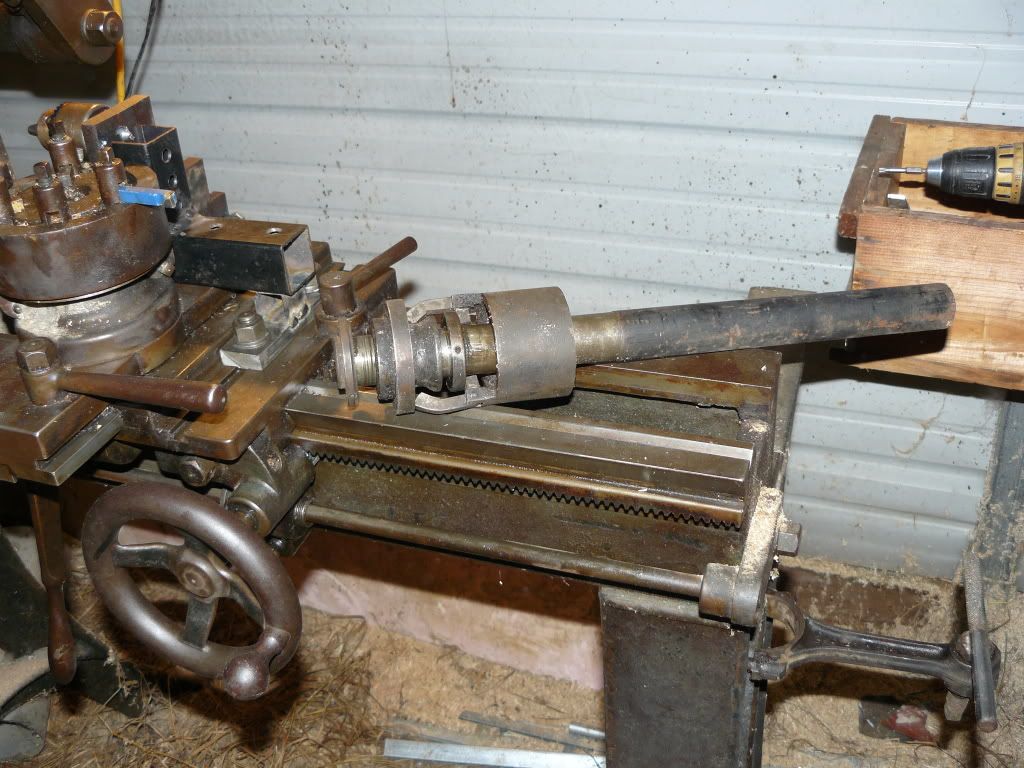flyinglow
Plastic
- Joined
- Jan 27, 2011
- Location
- southeast michigan, usa
I'm new to this forum, and machining in general, so please forgive my lack of knowledge of machining terms if i screw up names...
I recently started tinkering with this lathe that my Dad was given a few years back. The nameplate says Auerbach & Co, Dresden-Pieschen and that's basically all the info i have on it. The 4 jaw chuck that came with it has a mfg date of 1895, but i haven't been able to find any date or other info on the lathe. Searching the internet, i found a picture of a 1926 auerbach catalog that might offer something similar, but the picture is too grainy to tell...
It has a capacity of about 12 inches diameter, and about a 2 inch hole down the center of the spindle.
It has a new flat belt, and was fitted with an electric motor some time in the past. I have made a couple small things on it, it seems to function fairly well. The spindle carrier bearings seem good, and oilers work. The ways are a little dinged, and definitely slightly worn in the middle(the ?carriage? moves easier in the middle than it does on the ends), but still seem to be pretty true(to a woodworkers eye). I am amazed how good the condition is on this old piece.
A couple of questions i have:
How old is this thing?
What was it originally for?
Anybody have experience with one of these, or other pieces from that era?
What the heck is the attachment in the last 2 photos? It attaches to the back(left side) end of the spindle, and has a handle with a gimbal that seems to push a slider left and right. Thanks for any help, this old machine is fascinating, and i would love to really get it working properly.


Mystery attachment

attachment removed:

I recently started tinkering with this lathe that my Dad was given a few years back. The nameplate says Auerbach & Co, Dresden-Pieschen and that's basically all the info i have on it. The 4 jaw chuck that came with it has a mfg date of 1895, but i haven't been able to find any date or other info on the lathe. Searching the internet, i found a picture of a 1926 auerbach catalog that might offer something similar, but the picture is too grainy to tell...
It has a capacity of about 12 inches diameter, and about a 2 inch hole down the center of the spindle.
It has a new flat belt, and was fitted with an electric motor some time in the past. I have made a couple small things on it, it seems to function fairly well. The spindle carrier bearings seem good, and oilers work. The ways are a little dinged, and definitely slightly worn in the middle(the ?carriage? moves easier in the middle than it does on the ends), but still seem to be pretty true(to a woodworkers eye). I am amazed how good the condition is on this old piece.
A couple of questions i have:
How old is this thing?
What was it originally for?
Anybody have experience with one of these, or other pieces from that era?
What the heck is the attachment in the last 2 photos? It attaches to the back(left side) end of the spindle, and has a handle with a gimbal that seems to push a slider left and right. Thanks for any help, this old machine is fascinating, and i would love to really get it working properly.


Mystery attachment

attachment removed:



